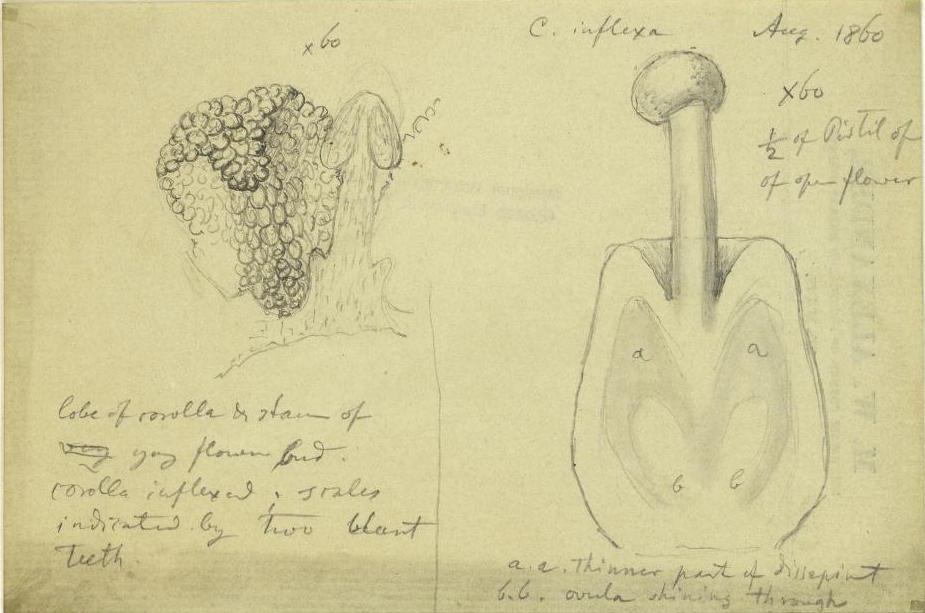George Engelmann’s Botanical Notes Can Now Be Seen!
The Missouri Botanical Garden (MBG), a partner in the Biodiversity Heritage Library Field Notes Project, has spent the last year digitizing the notebooks of George Engelmann.
George Engelmann assisted Henry Shaw, MBG’s founder, in establishing the Garden’s research arm and corresponding library. He arrived in Belleville, Illinois, sometime in the 1830s but soon moved to St. Louis where he set up practice as a physician. In the 1840s, Engelmann began corresponding with—and became a close friend and colleague of—Asa Gray at Harvard University, one of the best known botanists in the United States. This relationship, combined with his passion for plants of the newly opened American west, would lead to Engelmann becoming the principle coordinator for botanical collecting west of the Mississippi River.
 |
| Figure 1 from notebook 1, folder 1. George Engelmann : botanical notebook 1. Cistaceae, Violaceae. [Undated]. |
Setting up a trifecta of American botanical exploration with Gray at Harvard and John Torrey at the Smithsonian, Engelmann became an avid and knowledgeable botanist as he corresponded with Gray and Torrey to direct various westward explorers. He collected over 98,000 botanical specimens which were donated to MBG upon his death. Combined with 62,000 botanical specimens purchased in 1857 for Shaw from the Bernhardi Herbarium, originally in Germany, these two collections formed the foundation of the MBG herbarium. Engelmann also helped establish the St. Louis Academy of Sciences.
The BHL Field Notes Project is the third time George Engelmann’s collection has been accessed for scanning. In 2010, MBG received a grant to complete a project called Digitizing Engelmann’s Legacy, and another in 2013 to digitize Engelmann’s correspondence. With this latest project, MBG is able to provide access to much of Engelmann’s botanical notebooks.
 |
| Figure 2 from notebook 25, folder 9. George Engelmann : botanical notebook 25 : Cuscuta. Box 11: Folder 9: Cuscuta. (1860-1875). |
The notebooks were dismantled sometime in the past and housed within folders placed in boxes. His 58 notebooks are spread out over 27 boxes and comprise over 14,000 individual items. Not wanting to waste paper, Engelmann often wrote his notes on the back of correspondences, prescription slips, official documents, etc. Among his copious note taking are many botanical drawings likely depicting the specimens as he saw them.
Please feel free to browse Engelmann’s notebooks as they continue to be digitized and uploaded to the Biodiversity Heritage Library and Botanicus.
The BHL Field Notes Project is funded by the Council on Library and Information Resources (CLIR).





Leave a Comment